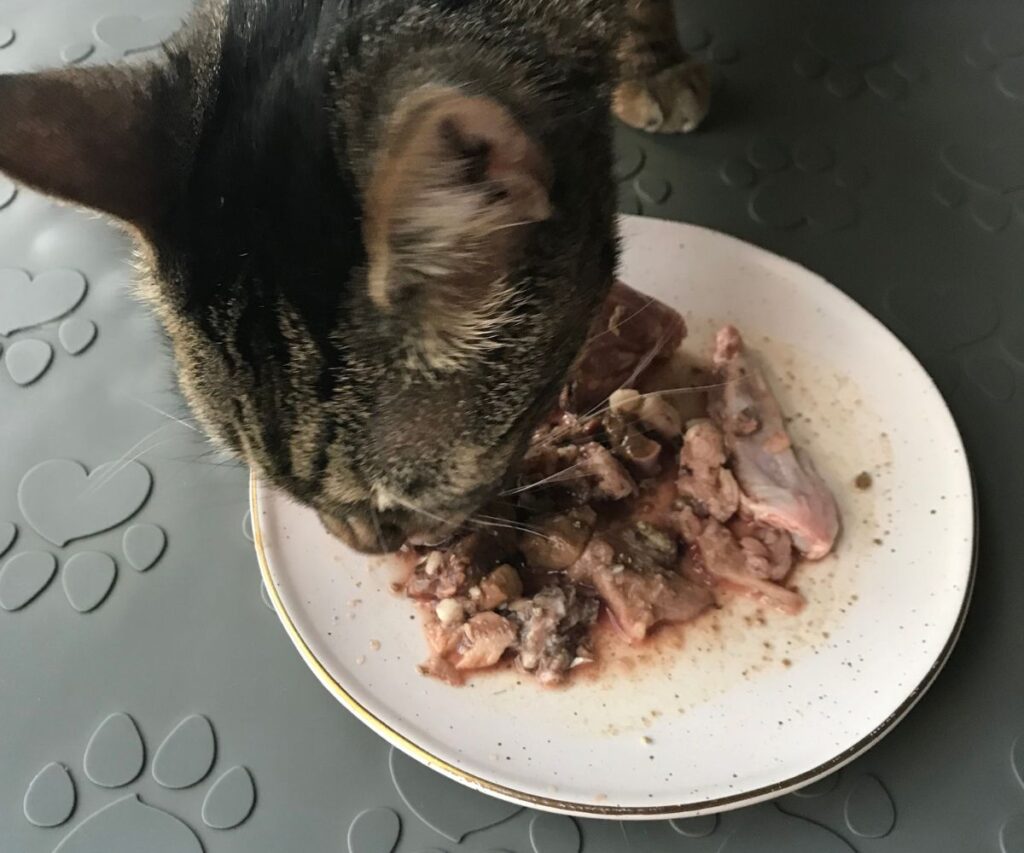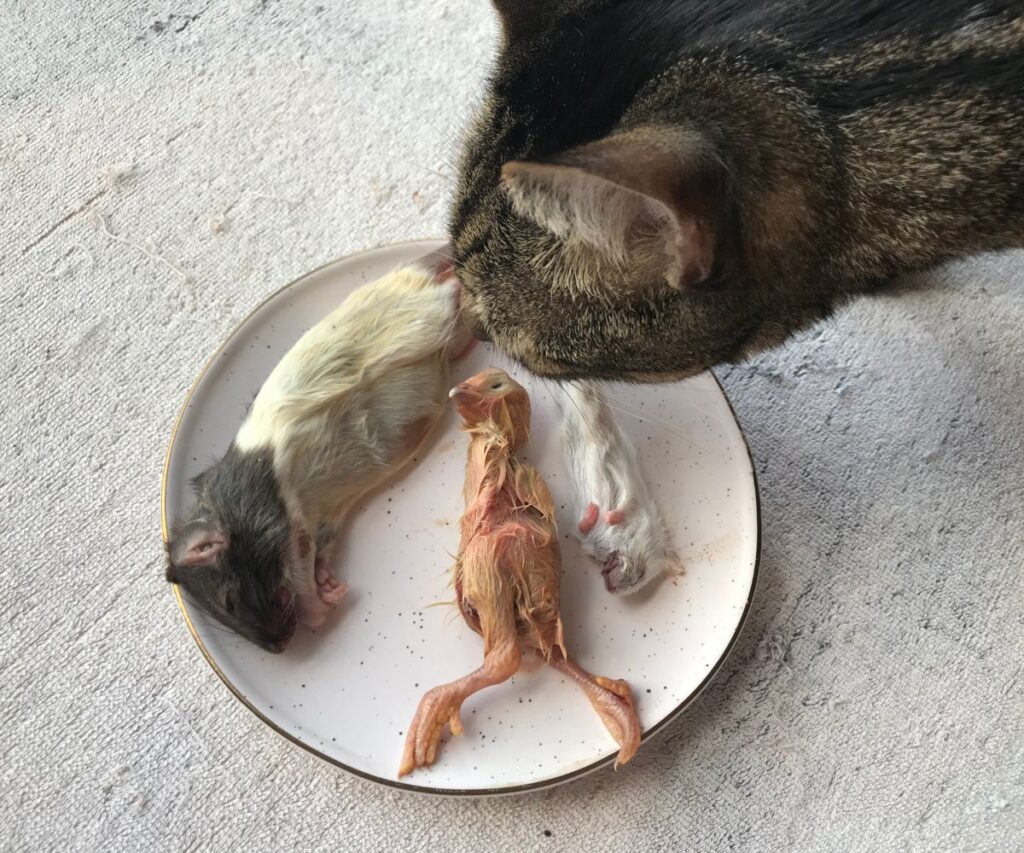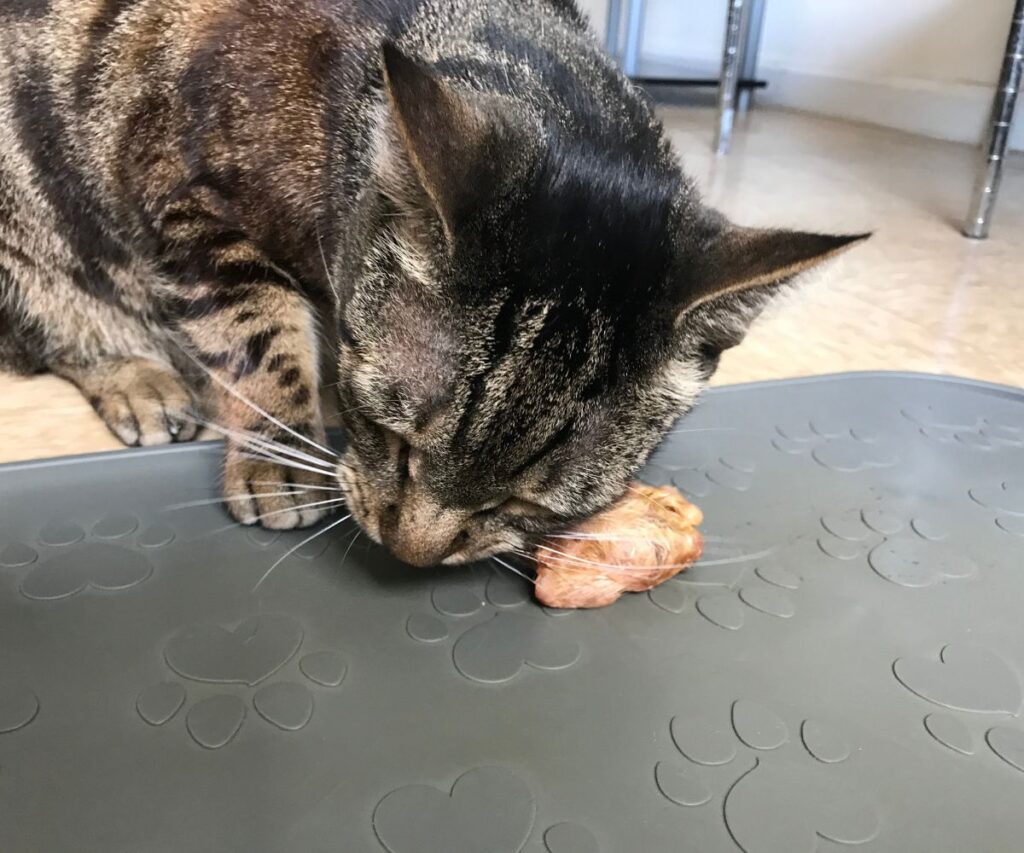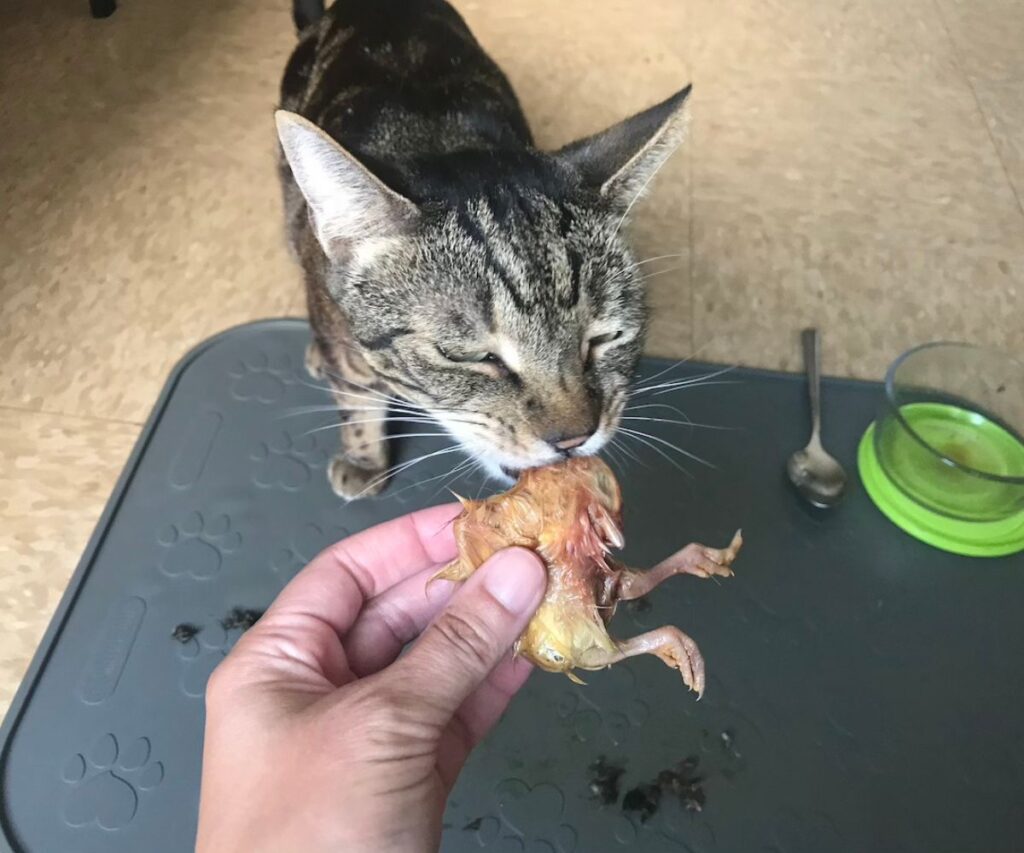Would you prefer to feed your cat natural proteins raised in an unnatural environment?
Or unnatural proteins raised in a natural environment?
Basically, whole prey vs a BARF diet.
PS – If you’re ready to switch to a healthy raw diet, my Raw Feeding Blueprint is for you!
I’ve created the most supportive plan inside this course! Think, every week is planned out for you with printable trackers, 50+ balanced recipes to choose from, meal prep hacks, and so much more. If you’re ready to make your cat’s raw food at home, my Raw Feeding Blueprint course is for you!
Whole prey vs BARF diets for cats
Whole prey is natural. But the only place to get whole prey is a breeding facility. Unless you breed the feeders yourself.
But I do not have the time or the space for that (small one-bedroom apartment city life).
The other protein options for a raw diet are beef, chicken, turkey, duck, lamb, goat, etc.

I used these proteins in Jericho’s homemade raw meaty bones diet. I sourced from local farms that raise animals naturally. Fresh sun, open fields, appropriate diet, good exercise.
But cats would not hunt down a cow. Even full-grown chickens are too large for cats.
So which is better?
Natural prey raised in an unnatural environment OR unnatural prey raised in a natural environment?
I stopped feeding whole prey and prolonged the transition to whole prey for this exact question.
But not anymore.
I’m finally transitioning Jericho to whole prey! And it’s all because of 𐤉𐤄𐤅𐤄 guidance.
Plus a study to back up which prey to feed.

What prey do cats eat?
Cats eat a variety of whole prey including rats, mice, rabbits, other mammals, birds, and a small amount of other whole prey.
Cambridge University Press compiled 55 different studies in 2011 to find out what cats eat in their natural environment.
These studies collected feral free-roaming cats’ scat, stomach, or gut contents.
Samples came from 18 different countries. And they collected a total of 12,997. The largest sample size from one area was 2,531.
And we’re not talking about jaguars, cougars, or tigers.
Samples came from the same little feline friends we keep as pets. The only difference is that these cats live outside.
They analyzed samples to see which prey make up the cat’s natural diet. They also reported the nutrient profiles of those prey.
Average diet of feral cats:
- Mammals: 77.5
- Birds: 16.1
- Reptiles/amphibians: 3.7
- Invertebrates: 1.2
- Fish: 0.3
- Carion: 1
- Human-linked foods: 0.1
- Unidentified: 0.1
Plant matter was so small they didn’t even report on it.
Mammals were broken up into rodents, other rodents, rabbits, insectivores, and other mammals.
Rabbits were the highest with rodents as a close second. But this is the average among all studies.
Cats consume higher amounts of rodents in some areas. It all depends on where the cats live.

What nutrition does whole prey provide to cats?
Whole prey provides higher moisture, protein, fat, and minerals compared to overly processed dry and wet canned cat foods.
Cambridge University Press compared the macronutrient composition of the cat’s natural diet to the NRC recommended allowances. They found that whole prey provides much higher mineral content.
Macronutrient profiles of whole prey:
- Moisture: 65-75%
- Protein (dry matter): 55-69%
- Fat (dry matter): 9-31%
- Ash (dry matter): 4-15%
- Carbs (dry matter): 0-13%
Ash = minerals. The mineral content was much higher in whole prey compared to the NRC minimum recommended allowances for all minerals except for copper.
Carbs are also a big difference here.
All processed dry food and most wet canned foods are very high in carbohydrates. You can use my carb calculator for cat food to see what your cat’s food is!
The average among dry foods is 33% on a dry matter basis. But the maximum amount in whole prey is only 13%. Most whole prey is 0%!
A BARF/PMR diet matches whole prey the most. And that’s what I fed Jericho for many years.
But that brings us back to the original question.
Do we want to feed unnatural proteins to our cats?

Why I’m switching to whole prey
I decided that I’d rather feed natural prey than unnatural prey. Even if whole prey is raised in a breeding facility.
The pros far outweigh the cons for me. But we’ll chat about that another day.
You can read Jericho’s raw and whole prey diet plan for inspo.
Want to feed whole prey too? The first step is to switch from dry/wet processed food to a premade raw diet. Check out how to transition cat food for help on that.
Yes, whole prey is natural. But your cat probably won’t recognize it as food if he has no fresh food in his diet.
Going from dry to whole prey is like going from addicting chips and candy to fresh filet mignon.
If you’re already feeding fresh food, check out my mouse cat food recipe to get started easily. This recipe is complete and balanced and uses ground mouse so the transition is easier! Then check out my whole prey recipe for cats.
